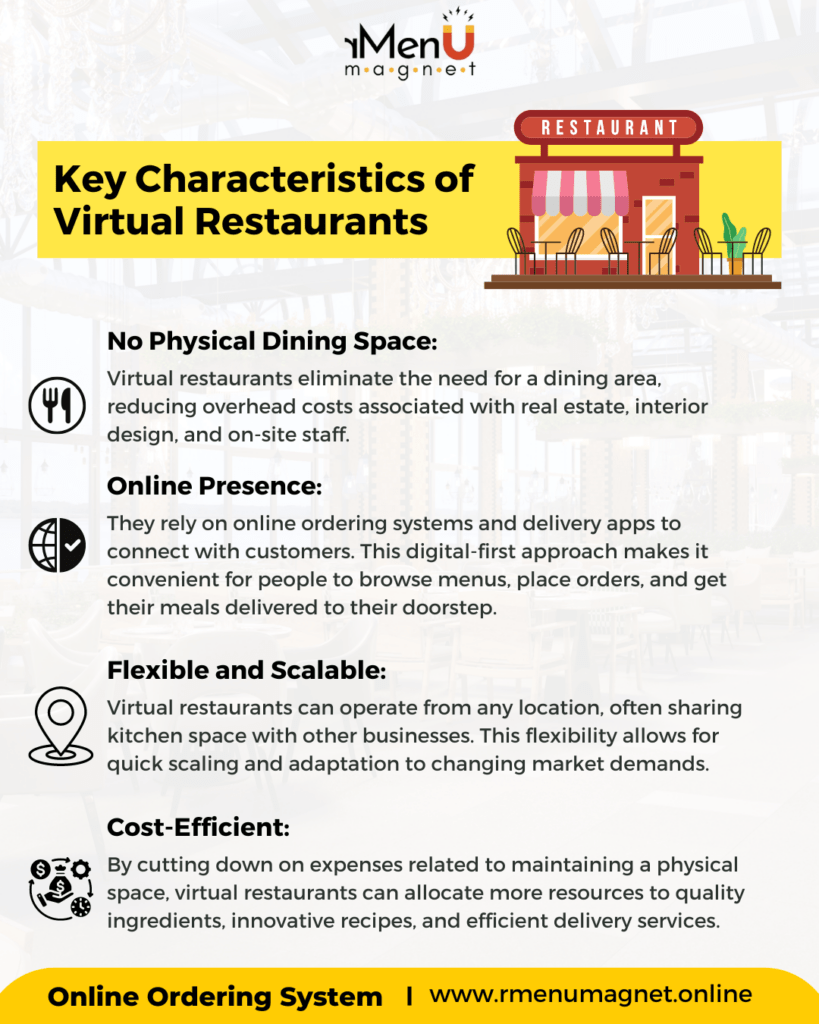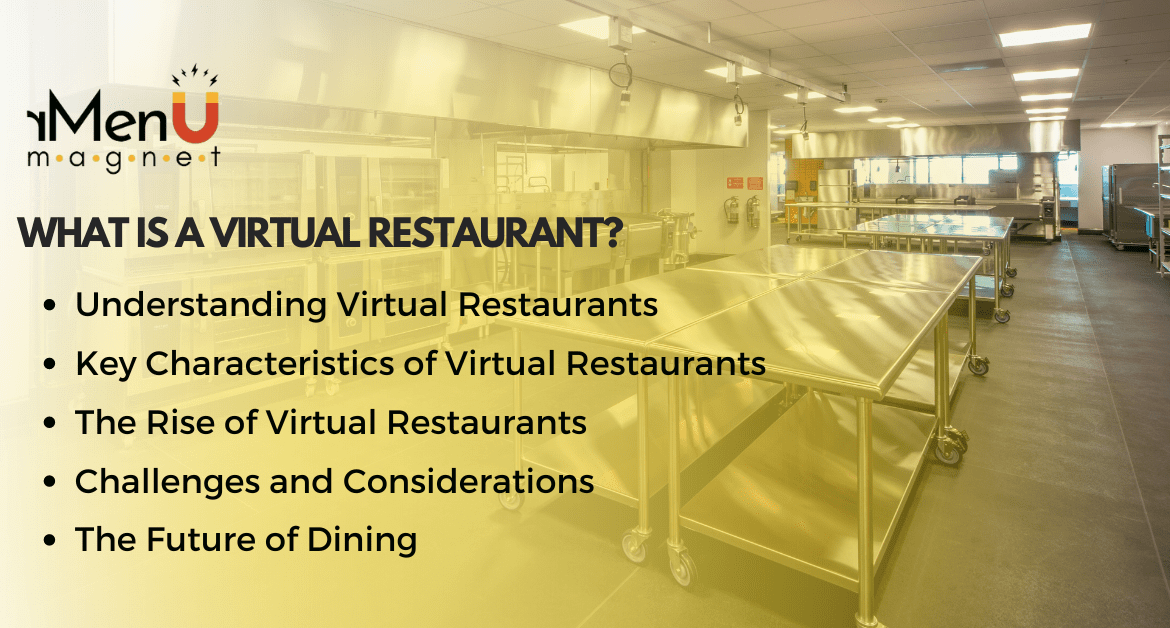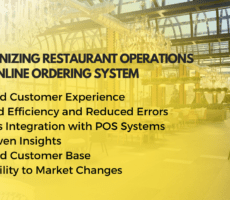Table Of Contents
In the ever-evolving landscape of the food industry, virtual restaurants have emerged as a revolutionary concept that redefines how we experience dining. But what exactly is a virtual restaurant? Let’s delve into this modern culinary phenomenon and explore its unique features, benefits, and the impact it has on the food service industry.

Understanding Virtual Restaurants
A virtual restaurant, also known as a ghost kitchen, cloud kitchen, or dark kitchen, operates exclusively online without a physical dining space. These establishments focus solely on preparing food for delivery or takeout, leveraging digital platforms to reach customers. Unlike traditional restaurants, virtual restaurants do not have a brick-and-mortar presence where patrons can dine in.
Key Characteristics of Virtual Restaurants
- No Physical Dining Space: Virtual restaurants eliminate the need for a dining area, reducing overhead costs associated with real estate, interior design, and on-site staff.
- Online Presence: They rely on online ordering systems and delivery apps to connect with customers. This digital-first approach makes it convenient for people to browse menus, place orders, and get their meals delivered to their doorstep.
- Flexible and Scalable: Virtual restaurants can operate from any location, often sharing kitchen space with other businesses. This flexibility allows for quick scaling and adaptation to changing market demands.
- Cost-Efficient: By cutting down on expenses related to maintaining a physical space, virtual restaurants can allocate more resources to quality ingredients, innovative recipes, and efficient delivery services.
The Rise of Virtual Restaurants
The rise of virtual restaurants is closely tied to the growth of food delivery services and changing consumer preferences. With busy lifestyles and a growing demand for convenience, more people are opting for food delivery rather than dining out. This shift has paved the way for virtual restaurants to thrive, offering diverse and specialized menus that cater to a wide range of tastes and dietary needs.
Benefits of Virtual Restaurants
- Lower Operational Costs: Without the burden of maintaining a physical dining space, virtual restaurants save on rent, utilities, and other related expenses.
- Increased Reach: Operating online allows virtual restaurants to reach a broader audience, tapping into the growing market of tech-savvy consumers who prefer ordering food through apps and websites.
- Menu Flexibility: Virtual restaurants can experiment with different cuisines and menu items without the constraints of a traditional setup. This agility enables them to respond quickly to food trends and customer preferences.
- Efficiency and Focus: By concentrating solely on food preparation and delivery, virtual restaurants can streamline their operations and focus on delivering high-quality meals consistently.
Challenges and Considerations
While virtual restaurants offer numerous advantages, they also come with their own set of challenges:
- Marketing and Visibility: Without a physical presence, virtual restaurants must invest heavily in digital marketing and partnerships with delivery platforms to build brand awareness and attract customers.
- Quality Control: Ensuring the quality and consistency of food during delivery can be challenging. Maintaining the same standards as a dine-in experience requires careful attention to packaging, temperature control, and delivery logistics.
- Competition: The low barrier to entry for virtual restaurants means increased competition. Standing out in a crowded market requires innovative offerings and exceptional customer service.
The Future of Dining
As technology continues to reshape the food industry, virtual restaurants are poised to play a significant role in the future of dining. Their ability to adapt to changing consumer behaviors, coupled with the convenience they offer, makes them a compelling choice for modern diners. Whether you’re craving a gourmet meal or a quick bite, virtual restaurants bring a world of culinary delights to your doorstep, transforming how we enjoy food in the digital age.
In conclusion, virtual restaurants represent a dynamic and innovative approach to food service, embracing the power of technology to deliver exceptional dining experiences. As they continue to evolve, they promise to bring even more exciting and diverse options to the table, redefining the way we satisfy our culinary cravings.






